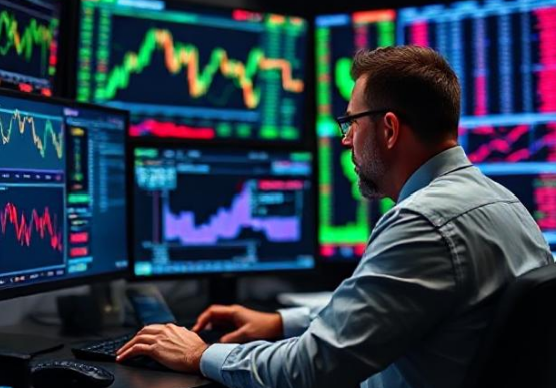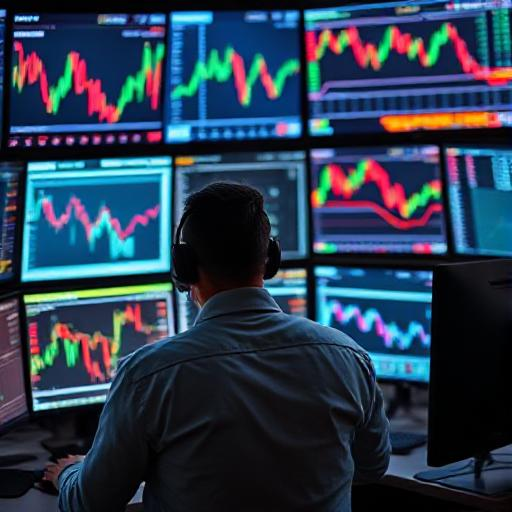The Impact of Geopolitical Events on Your Investment Portfolio
In 2022, global markets reeled as Russia’s invasion of Ukraine sent energy prices soaring and triggered stock market volatility. Investors watched helplessly as portfolios swung wildly, a stark reminder that geopolitical events can upend even the most carefully constructed financial plans. From trade wars to elections, pandemics to military conflicts, geopolitical shifts shape economies and markets in ways that demand attention. For investors aged 20–50 with disposable income, understanding these dynamics isn’t just optional—it’s critical to safeguarding and growing wealth. This article explores how geopolitical events influence investments, actionable strategies to mitigate risks, and lessons from historical crises to future-proof your portfolio.
1. Understanding Geopolitical Events and Their Economic Impact
Geopolitical events—such as wars, trade disputes, elections, and regulatory changes—create ripple effects across global markets. These events often trigger economic uncertainty, leading to market volatility, supply chain disruptions, inflation spikes, and shifts in consumer behavior. For example, the U.S.-China trade war (2018–2020) saw tariffs on $450 billion worth of goods, causing tech stocks like Apple and NVIDIA to plummet due to disrupted supply chains. Similarly, Brexit’s uncertainty erased nearly $3 trillion from global markets in 2016.
Key economic impacts include:
- Currency fluctuations: Sanctions on Russia in 2022 caused the ruble to lose 40% of its value overnight.
- Commodity price shocks: Ukraine (a major wheat exporter) and Russia (12% of global oil production) disrupted food and energy markets.
- Interest rate changes: Central banks may raise rates to combat inflation caused by supply shortages.
2. How Different Asset Classes Respond to Geopolitical Shocks
Not all investments react the same way to geopolitical turmoil. Here’s how major asset classes typically behave:
Equities
Stocks often face short-term volatility but rebound long-term. Sector-specific impacts are common:
- Defense stocks (e.g., Lockheed Martin) surged 20% post-Ukraine invasion.
- Renewable energy companies gained traction as Europe sought alternatives to Russian gas.
- Tech stocks may suffer if global chip supplies (concentrated in Taiwan) are disrupted.
Bonds
Government bonds (like U.S. Treasuries) become safe havens during crises, driving yields down. Corporate bonds, however, face default risks if economic growth stalls.
Commodities
Oil, gold, and agricultural goods often spike. In 2022, Brent crude hit $139/barrel, while gold prices rose 15% as investors sought stability.
Real Estate
Geopolitical risks can reduce demand in conflict-prone regions while boosting markets in perceived “safe” countries like Canada or Australia.

3. Strategies to Mitigate Geopolitical Risks in Your Portfolio
Diversify Across Regions and Sectors
Avoid overexposure to single markets. For instance, instead of focusing solely on U.S. tech stocks, consider European renewable energy ETFs or emerging market index funds.
Allocate to Defensive Assets
Gold: Historically retains value during crises.
Utilities and Consumer Staples: Companies like Procter & Gamble thrive regardless of economic conditions.
Cryptocurrencies: Some investors use Bitcoin as a hedge, though its volatility requires caution.
Stay Liquid
Maintain cash reserves to capitalize on buying opportunities during market dips.
Use Hedging Instruments
Options contracts and inverse ETFs can offset losses. For example, buying put options on the S&P 500 before the 2020 election reduced risks for savvy investors.

4. The Role of Information and Timing in Geopolitical Investing
Timing is everything. While predicting events like coups or natural disasters is impossible, monitoring trends can provide an edge:
- Follow leading indicators: Oil prices, shipping rates, and currency movements often signal brewing crises.
- Leverage news tools: Platforms like Reuters or Bloomberg Terminal offer real-time updates.
- Consult experts: Financial advisors with geopolitical expertise can interpret events’ market implications.
However, avoid knee-jerk reactions. During the 2016 U.S. election, the S&P 500 dropped 5% overnight but recovered within weeks. Long-term investors who held steady saw gains of 12% by year-end.
5. Case Studies: Lessons from Past Geopolitical Crises
2022 Russia-Ukraine War
Energy stocks (Exxon, Shell) surged 50% as oil prices spiked.
European auto manufacturers (Volkswagen) slumped due to supply chain issues.
Takeaway: Overweighting energy and underweighting manufacturing sectors ahead of conflicts could mitigate losses.
2018 U.S.-China Trade War
The S&P 500 fell 6% in December 2018 but rebounded 29% in 2019.
Companies with diversified suppliers (e.g., Samsung) outperformed those reliant on China.
Takeaway: Supply chain resilience matters.
2020 COVID-19 Pandemic
Remote work tech (Zoom) and e-commerce (Amazon) soared, while airlines and hospitality crashed.
Takeaway: Pandemics accelerate structural shifts—invest in innovation.

Conclusion
Geopolitical events are inevitable, but their impact on your portfolio isn’t predetermined. By diversifying assets, staying informed, and adopting proactive strategies, you can turn volatility into opportunity. Remember: Markets have survived world wars, recessions, and pandemics. The key is to build a resilient portfolio that weathers storms and positions you for long-term growth. Stay agile, stay informed, and let history guide your decisions in an unpredictable world.
(Writer:Lily)





